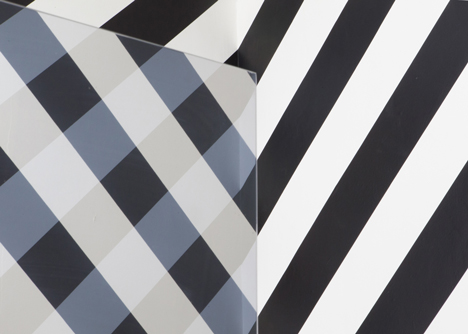Works on Reflection II by Kim Thome at William Benington Gallery
Norwegian designer Kim Thome has installed a series of two-way mirrors that reflect vinyl stripes covering the walls of a London gallery (+ slideshow).
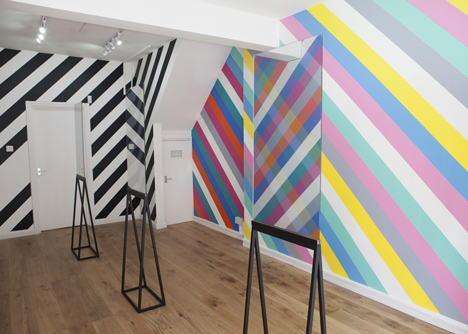
Kim Thome fixed multicoloured and black and white strips of vinyl to the walls of William Benington Gallery and placed three two-way mirrors on simple black frames in the centre of the room.
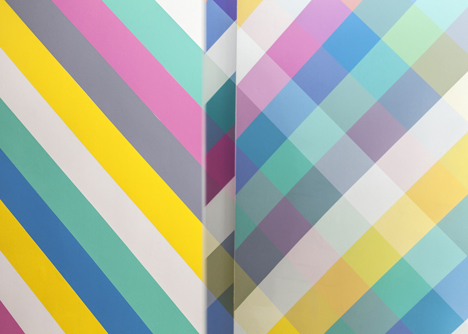
The semi-transparent surfaces produce optical illusions as the reflections are overlaid onto the background when viewed from different angles.
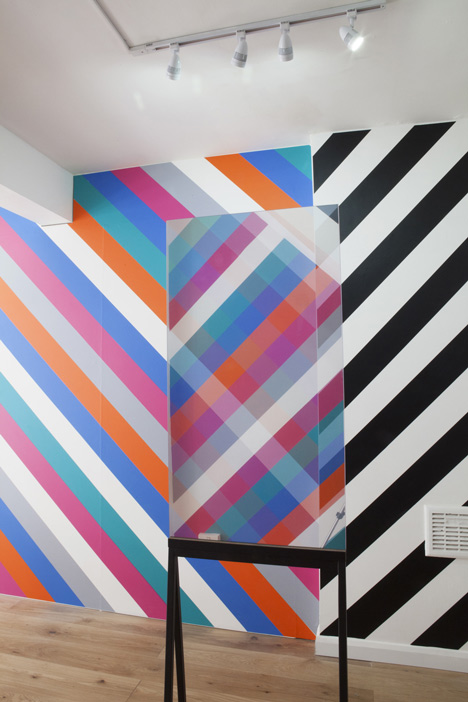
Thome says the pattern was divided into coloured and monochrome areas following the shape of the interior and "giving a new graphic element to the mirrors as the viewer explores the space."

An additional suspended circular artwork features a diagonal pattern on one surface, which is reflected by two-way mirror material applied to the perpendicular plane.
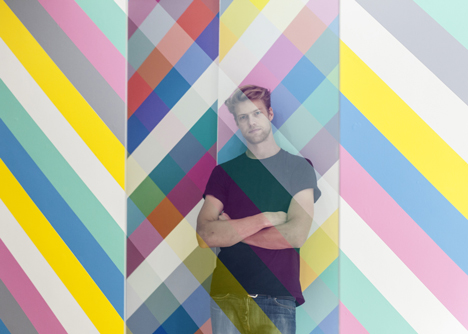
Works on Reflection II is an extension of Kim Thome's graduation project, which was presented at the Royal College of Art earlier this year and comprised a range of colourful furniture with built-in two-way mirrors.

Other illusory mirrors include an installation that looks as if people are climbing the facade of a London townhouse and a mirror that only works when it is placed in front of a dark shape on a wall. See all design with mirrors »
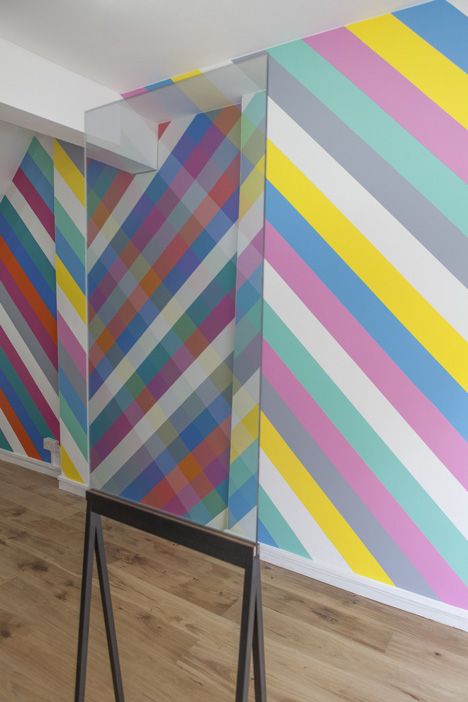
Here's some more information from Kim Thome:
William Benington Gallery presents Kim Thome’s first show with the gallery; Works on Reflection II.
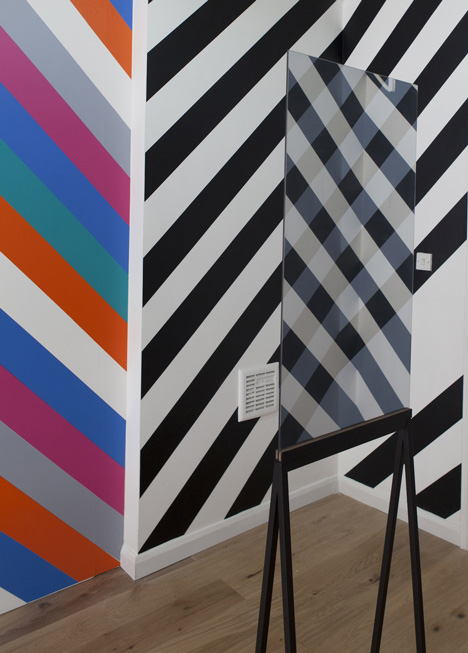
Works On Reflection II is a spatial installation which is a result of a longer investigation exploring the ’reflective’. Using the gallery space as the canvas, the installation will use the ‘reflective’ as medium, or more specifically, a two way mirror. Colour, geometry and patterns are central in staging a fictional space for these to merge, creating an ephemeral ever-changing environment.

Three mirrors stand central in the gallery space interacting and reflecting the colour vinyl pattern on the walls. Semi-transparent and reflective material such as two-way mirror allows the fore and background to be manipulated by carefully controlling the surrounding elements.
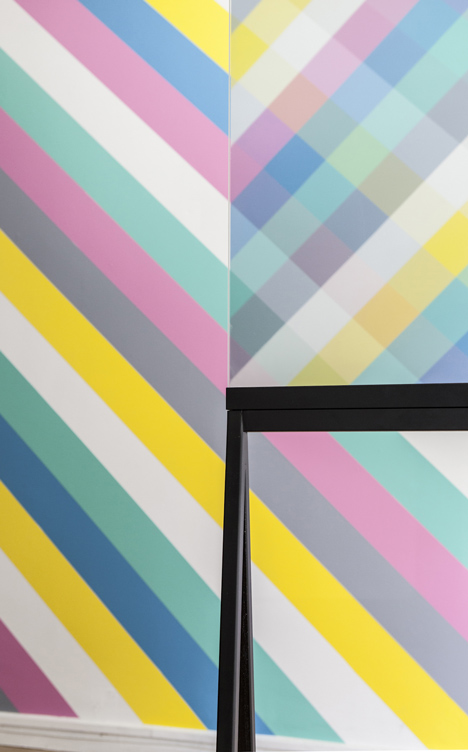
Colour in the pattern divides the space into three separate areas following the gallery’s interior architecture, giving a new graphic element to the mirrors as the viewer explores the space.
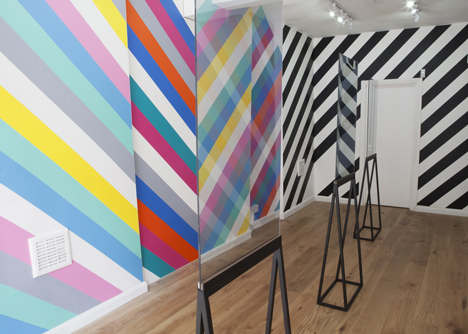
In this work viewers are challenged by what the reflections reveal, another reality, far from what is visually expected, engaging the viewer to reconsider the objects reflected.
